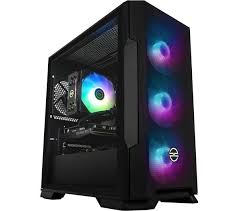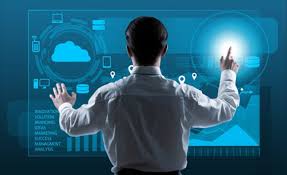The Evolution of Personal Computers
Personal computers, commonly known as PCs, have revolutionised the way we work, communicate, and access information. From their humble beginnings to the powerful machines we use today, the evolution of PCs is a fascinating journey that has shaped the modern digital landscape.
Early Days
The concept of a personal computer first emerged in the 1970s when pioneers like Steve Jobs and Bill Gates began developing small, affordable machines that could be used by individuals at home or in small businesses. These early PCs were basic in terms of processing power and storage capacity but laid the foundation for what was to come.
Rise of IBM and Microsoft
In the 1980s, IBM introduced its first personal computer, which ran on Microsoft’s MS-DOS operating system. This marked a significant milestone in the history of PCs as it made computing more accessible to a wider audience. Microsoft’s Windows operating system later became the dominant platform for PCs, further solidifying its place in the market.
The Internet Age
With the advent of the internet in the 1990s, personal computers took on a new role as gateways to a vast world of information and communication. The ability to connect to the internet transformed how we access news, shop online, and communicate with others around the globe.
Advancements in Technology
Over the years, PCs have undergone significant advancements in terms of processing power, memory capacity, and design. From bulky desktop towers to sleek laptops and compact tablets, PC manufacturers continue to innovate to meet the demands of modern users who require speed, efficiency, and portability.
The Future of PCs
As technology continues to evolve at a rapid pace, so too will personal computers. Concepts like artificial intelligence, virtual reality, and quantum computing are shaping the future of PC technology, promising even greater capabilities and possibilities for users worldwide.
In conclusion, personal computers have come a long way since their inception and have become indispensable tools in our daily lives. As we look towards an increasingly digital future, one thing is certain – the evolution of PCs will continue to drive innovation and change in ways we can only imagine.
Essential FAQs About PCs: Understanding, Choosing, and Troubleshooting Your Computer
- What is a PC?
- How does a PC work?
- What are the key components of a PC?
- How do I choose the right PC for my needs?
- How can I speed up my PC?
- What are common troubleshooting issues with PCs?
What is a PC?
A PC, short for personal computer, is a versatile electronic device designed for individual use that can perform various tasks such as word processing, internet browsing, gaming, and multimedia consumption. PCs typically consist of a central processing unit (CPU), memory, storage devices, input/output peripherals like a keyboard and mouse, and a monitor for display. They run operating systems like Windows, macOS, or Linux to manage software applications and provide a user-friendly interface. PCs come in different forms such as desktops, laptops, and tablets, offering users flexibility in choosing the right device to suit their needs.
How does a PC work?
A personal computer, or PC, operates through a complex system of hardware and software working together to perform various tasks. At its core, a PC consists of components such as the central processing unit (CPU), memory (RAM), storage devices (hard drive or SSD), and input/output devices like the keyboard and monitor. When a user interacts with a PC by running programs or accessing files, the CPU processes instructions from the software, temporarily storing data in memory for quick retrieval. The operating system manages these processes and coordinates communication between hardware components to ensure smooth operation. In essence, a PC works by executing instructions through its hardware components based on user input, enabling users to perform tasks ranging from simple calculations to complex multimedia editing.
What are the key components of a PC?
When considering the key components of a personal computer (PC), it is essential to understand the fundamental elements that work together to enable its functionality. A typical PC consists of a central processing unit (CPU) that serves as the brain of the system, memory modules (RAM) for temporary data storage, a motherboard that connects all components, storage devices such as hard drives or solid-state drives for long-term data storage, a graphics processing unit (GPU) for handling visual tasks, a power supply unit (PSU) to provide electricity, and various input/output devices like a keyboard, mouse, and monitor. Each of these components plays a crucial role in ensuring the smooth operation of a PC and collectively contributes to its overall performance and capabilities.
How do I choose the right PC for my needs?
When considering how to choose the right PC for your needs, it is essential to assess your specific requirements and preferences. Start by determining the primary purpose of the PC, whether it be for gaming, work, creative tasks, or general use. Consider factors such as processing power, memory capacity, storage options, graphics capabilities, and portability based on your intended usage. Additionally, think about your budget constraints and whether you prefer a desktop or laptop configuration. Researching different models, reading reviews, and seeking advice from experts can help you make an informed decision that aligns with your individual needs and ensures that you select a PC that will enhance your computing experience.
How can I speed up my PC?
One frequently asked question among PC users is, “How can I speed up my PC?” There are several effective ways to improve the performance of your computer and enhance its speed. Firstly, regularly clean up unnecessary files and programs that may be taking up valuable space on your hard drive. Additionally, consider upgrading your hardware components, such as adding more RAM or switching to a solid-state drive (SSD) for faster data access. Running regular system maintenance tasks, such as disk defragmentation and software updates, can also help optimise your PC’s performance. Lastly, ensure that your computer is free from malware and viruses by using reputable antivirus software to maintain a smooth and efficient operation of your PC.
What are common troubleshooting issues with PCs?
Common troubleshooting issues with PCs often include slow performance, software glitches, connectivity problems, and hardware malfunctions. Slow performance can be caused by a variety of factors such as insufficient memory, outdated software, or malware infections. Software glitches may arise from incompatible programs or corrupted system files. Connectivity issues can stem from faulty network settings or hardware components. Hardware malfunctions, such as a failing hard drive or overheating components, can also impact the overall functionality of a PC. Addressing these common troubleshooting issues requires a systematic approach to identify and resolve the root cause effectively.


